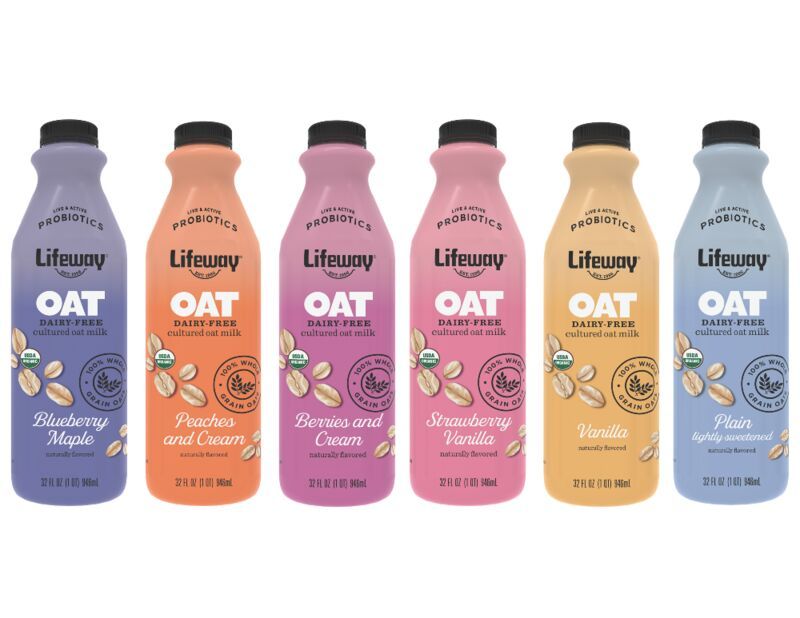
Increasing numbers of Americans are opting for vegan and vegetarian diets. While most studies put the number of vegans in the United States at between two and six percent of the population, some surveys claim that the number of vegans in the United States has tripled in the past five years. This increase is based on the fact that more people are embracing the availability of delicious plant-based meats.
Vegetarians as well as vegans are widely accepted in the United States. Many people misrepresent their own behavior. Many people misrepresent their own behavior. For example, they may claim that they are vegetarians and then eat meat. Friends and family may be misled by some people about their dietary preferences. Others may be unable to afford animal products, or may choose to skip them because of personal health or ethical reasons.
The Vegetarian Resource Group conducted many polls on Americans. The results will vary depending on what type of question was asked and how the survey was done. The VRG polls of 2015 and 2016 were different, and results should be compared. Faunalytics' 2014 survey is also quite different. The survey was done online and respondents were stratified according to age, gender, household income, sex, and other factors. Faunalytics didn't have a census-balancing system to ensure that the numbers were representative.

A study conducted by Purdue University agricultural economist Jayson Lusk found that a higher percentage of Americans are self-identified as vegetarians. The study found that three percent of Americans were vegetarians in 2017, according to the study. According to the survey, 64% of vegetarians claimed that they ate meat within 24 hours.
Another survey, conducted by Food Standards Agency and the National Centre for Social Science Research, found that the percentage of Americans who eat vegetarian food while eating out was 46 percent. This is a small fraction of the total population, but it shows that people in the United States are more likely to eat vegetarian meals while eating out. This is especially true of Northeast residents, where vegans are more common than ever.
The number of vegans in the United States has increased over the past two years, according to a study by Vegetarianism in America. The study found that the U.S. has 6.5million vegans, with another 10% expected to follow the vegan lifestyle in coming years.
The Vegetarian Times study found that about 3 percent of Americans eat a vegetarian-based diet. The study did not indicate how it calculated the percentage of vegans or vegetarians. A question asking how much fish or meat they eat was not included in the survey. Consequently, the results may have been lower than they are.

GlobalData also conducted a study that showed that vegans have increased in the United Kingdom by 4 percent over the last five years. The survey also revealed that vegans at the United Nations have increased by almost two percent over the same period.
FAQ
What is the working principle of an antibiotic?
Antibiotics kill harmful bacteria. Antibiotics are used for treating bacterial infections. There are many different types of antibiotics. Some can be taken orally, others are injected and some are applied topically.
Antibiotics are often prescribed to people who have been exposed to certain germs. To prevent shingles, an oral antibiotic may be prescribed to someone who has had chicken pox. Or, if someone has had strep throat, he or she might receive an injection of penicillin to help prevent pneumonia.
Children should not be given antibiotics without the consent of a doctor. Children are more susceptible to side effects from antibiotics than adults.
Diarrhea, the most common side-effect of antibiotics, is probably diarrhea. Other possible side effects include stomach cramps, nausea, vomiting, allergic reactions, headaches, dizziness, and rashes. These side effects typically disappear once treatment is complete.
Get immune enhancement with herbs and supplements
Natural remedies and herbs can be used to increase immune function. Some common examples include garlic, ginger, oregano oil, echinacea, ginkgo biloba, and vitamin C.
These herbal remedies are not meant to replace medical treatment. They could cause side effects like nausea, dizziness or stomach cramps, dizziness as well as allergic reactions.
Is being cold bad for your immune system?
Cold can make you less immune to infection because your body makes fewer white blood cells, which are essential for fighting infections. You will feel less pain if you are cold.
How can I lower my blood pressure
You must first determine the cause of high blood pressure. Next, take steps that will reduce the risk. This could mean eating less salt, losing some weight, taking medication, and so on.
It is important to ensure that you get enough exercise. If you don’t have enough time to exercise regularly, consider walking more often.
A gym membership is a good idea if you don't like how much exercise your doing. You will likely want to join an exercise group that shares your goals. It's much easier to follow a routine if someone is with you at the gym.
Statistics
- In both adults and children, the intake of free sugars should be reduced to less than 10% of total energy intake. (who.int)
- The Dietary Guidelines for Americans recommend keeping added sugar intake below 10% of your daily calorie intake, while the World Health Organization recommends slashing added sugars to 5% or less of your daily calories for optimal health (59Trusted (healthline.com)
- WHO recommends consuming less than 5% of total energy intake for additional health benefits. (who.int)
- nutrients.[17]X Research sourceWhole grains to try include: 100% whole wheat pasta and bread, brown rice, whole grain oats, farro, millet, quinoa, and barley. (wikihow.com)
External Links
How To
What does the word "vitamin" mean?
Vitamins are organic substances found naturally in food. Vitamins allow us to absorb nutrients from food. Vitamins cannot be made by the body; they must be taken from food.
There are two types if vitamins: water soluble, and fat soluble. Water soluble vitamins dissolve easily in water. Vitamin C,B1(thiamine), B2 (2riboflavin), and B3 (3niacin), as well as vitamin C,B1, B2 (riboflavin), and B3 (niacin), vitamin B6 (pyridoxine), vitamin folic acid (biotin), pantothenic, and choline are examples. The liver and fatty tissue are the main storage places for fat-soluble vitamins. Examples include vitamin D, E, K, A, and beta carotene.
Vitamins are classified based on their biological activity. There are eight main groups of vitamins.
-
A - Essential for healthy growth and health maintenance.
-
C - vital for nerve function and energy generation
-
D - necessary for healthy bones and teeth.
-
E - required for good vision & reproduction.
-
K - essential for healthy nerves, muscles, and joints.
-
P – Vital for building strong bones.
-
Q - aids digestion, absorption and absorption iron
-
R - necessary for making red blood cells.
The recommended daily intake (RDA), of vitamins varies with age, gender and physical conditions. The U.S. Food and Drug Administration sets RDA values.
For adults over 19 years, the RDA is 400 mg per day for vitamin A. However, pregnant women need 600 micrograms per day because it is important for fetal development. Children ages 1-8 require 900 micrograms per day. For infants younger than one year, 700 micrograms are required daily. However, this number drops to 500 micrograms each day for children aged 9-12 months.
Children aged 1-18 years need 800 micrograms daily, while children overweight require 1000 micrograms per days. Children who are severely obese or underweight will need 1200 micrograms each day.
Children between 4-8 years of age who have been diagnosed by anemia must consume 2200 micrograms daily of vitamin C.
2000 micrograms are required daily for good health in adults over 50. Due to their increased nutrient needs, pregnant and breastfeeding women need 3000 micrograms daily.
Adults over 70 need 1500 micrograms daily, since they lose around 10% of their muscle mass every decade.
Women who are pregnant and lactating need more nutrients than the RDA. Pregnant women require 4000 micrograms daily during pregnancy, and 2500 micrograms every day after birth. Breastfeeding mothers need 5000 micrograms per day when breast milk is being produced.